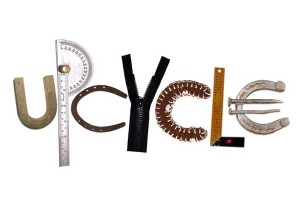I may get commissions for purchases made through links in this post.

The pantry
Let your pantry be the starting point for grocery shopping.
Decide on a set assortment of foods you stock in your pantry. Restock when you run out and don’t buy any other foods. Want to become a truly smart shopper? Read this ultimate save money on grocery shopping guide.
Have a “Clean the pantry out week”
Have a use-up week where you use all of those things that are in your pantry. Make it a point to go through all of those boxes and cans that have been sitting in there for months before you make another trip to the store.
- This tip is also useful when it comes to your bathroom cabinets, since so many of us have half-used bottles of lotion, shampoo and conditioner taking up room and going to waste.
Add filler to your meat
Use lentils, oats, tomatoes or potatoes to add some bulk to your mince-based dishes.
Breadcrumbs and powdered milk or potatoes are another easy and inexpensive way to make your casseroles, soups or stews more filling.
Filter your own water
Since bottled water is expensive, use a water filtration device and bottle your own water to take to work, school, the gym or on errands.
Bag your own snacks from items that you buy in bulk
Foods that are individually wrapped are generally much more expensive on a per unit basis, so pick up a big canister of nuts, chips or pretzels and put them into reusable containers of your own.
You can also make your own trail mix using the perfect blend of your favorite ingredients for a lot less than the bags that you get in the store.
Keep your perishables in sight
If produce, meat or dairy items are crammed in the back of your refrigerator, they stand a much better chance of going bad before you remember that they’re in there.
Organize your refrigerator to ensure that those items that will go bad first are front and center, so you don’t have to throw them in the trash.
FIFO
Use a “first in, first out” strategy when re-stocking your fridge and pantry to keep products from expiring before you can use them. Check expiration dates once a month or so to see what you’re in danger of having to toss and then make that item a part of your next meal plan.
Use quality containers
Use air-tight containers to keep your crackers, cereals and chips fresh for longer. The boxes and bags they normally come in won’t keep them good for long if they aren’t closed up tightly. Put them into clear glass or plastic containers with a lid that closes securely when you unpack them.
- Check the thrift store for some good containers. It’s a small investment that will pay itself back within a while.
Don’t take expiration dates too seriously
Recognize that expiration dates are not always rock-solid. Oftentimes, food will still be good for at least a day or two (and sometimes much longer) beyond the date that’s printed on the package, so use common sense when deciding on whether or not to toss it.
If it smells, looks and tastes good, then it’s probably just fine. If you’re uncertain about any of these factors, be safe and throw it out. The money that you spend on treatment for a food-borne illness will be considerably more than the price of a package of meat.
Frugal cooking tips
Cook from scratch
Cook your own meals without using a prepared mixture of ingredients in order to save big and eat healthier, which will wind up saving you money on medical expenses down the road as well. Bake your own bread, make your own soup stock or build your own pizza at home and you’ll be surprised by how much cheaper it winds up being.
Use your peelings to make nutritious and tasty snacks
The peel of a potato is where the vast majority of the fiber and vitamins are, so roasting them in some olive oil with a little rosemary and garlic makes a great appetizer or snack and leaves no waste.
- Tasty tip: Use dried (first washed) orange peels to add flavor to your tea (very tasty with rooibos tea).
Use ginger scraps to make tea
Don’t throw away the peel of fresh ginger while cooking. Steep a healthy, spicy tea from it to enjoy after your meal. It’s like mother nature intended it like this as ginger is a known digestive aid. It helps prevent stomach gas and flatulence.
The power of powdered
Use powdered milk for your coffee and tea or for baking and making sauces. It’s less expensive than fresh milk and you won’t notice the difference in taste when it’s part of a larger blend of ingredients.
Make more ‘left-over dishes’
Make dishes like casseroles and stews that are leftover-friendly so that you won’t have to heat your kitchen as often and you won’t be wasting food.
Get creative with left-overs
Make your leftovers into something completely new and delicious. Too often, we tend to think of leftovers as something to dread, a sad and degraded repeat of last night’s meal. But if you use your imagination, leftover meals can be at least as exciting as the original was, or even more so.
- If you have some baked chicken, for example, it could be incorporated into a delicious casserole, pasta dish or salad.
- Use your leftover rice, beans or pasta from last night to bulk up the soup or stew that you’re having for lunch.
This trick will save you money twice, since you won’t wind up throwing out food and your lunch will be much more filling.
[bctt tweet=”#FrugalTip: Make lunch from leftovers. No more spoilage and it fills you up more so you’ll save money twice.”]
Don’t throw away butter wax paper
After you’ve used up a block of butter, put the wax paper wrapping in baggie and keep it in the fridge for the next time that you need to grease a cookie sheet or cake pan. It’s one of those tricks the truly frugal use.
Adjust your cooking methods to the season
Use a crockpot or microwave more often in the summertime and the oven more often in the winter.
That way, you won’t be heating your house when you have the AC cranked up and your heater won’t have to click on as much either.
When you bake or roast a dish in the oven during the cooler seasons, leave the door open a bit after you’ve turned it off in order to allow as much of the heat as possible to escape into your home and reduce the need for central heating.
Frugal folks are canny when it comes to preserving food
Options to preserve foods abound. Pickling, lying, drying, freezing, canning, bottling, bugging, jellying and even more.
Airtight equals penny-wise
The oil in nuts can cause them to go bad if they’re left for too long, so keep them in an airtight container in the freezer to prevent this from happening. Since nuts can be fairly pricey at the grocery store, this tip could save you a lot of cash in the end.
Freeze more
A lot of different types of fruit can be frozen and used later, including berries, grapes, bananas and pitted cherries. They can be then enjoyed as a frozen treat when it’s hot out or you can toss them into the blender with some yogurt to make a refreshing smoothie.
- Did you know you can freeze milk, (Greek) yogurt, eggs, dairy creamers, and (shredded) cheese and extend shelf life to up to 3 months? Stock up at the next store sale. Buy butter in bulk too, frozen, it can last up to 6-8 months.
Don’t feed the ducks
At least not with stale bread. It’s unhealthy for our feathered friends and pollutes waterways. Give them frozen peas instead.
If you’re concerned that your bread is about to go stale or you aren’t fond of the ends of a the loaf, there are a lot of things that you can use it for to avoid having to throw it out.
- Make croutons or breadcrumbs, Melba toast or bread pudding with your old bread or loaf ends and you’ll never be able to taste the difference.
- You can also put a slice of bread in with your brown sugar to keep it from turning hard.
Don’t toss scrapings and scraps
Keep your carrot scrapings and celery, onion scraps in an airtight container in your freezer. They can be tossed in with a soup bone the next time that you want to make a delicious homemade stock.
Make jams
If you buy fresh fruits while they’re in season, you can make your own jams that are much less expensive than the store-bought varieties and better for you, as well.
Especially when you buy overripe fruits at the market, you can save heaps. Added benefit, there’s more natural sugar in those fruits which is ideal for jams.
Use stems too
Chop up broccoli stems to throw on your salads or sauté them in some olive oil. Either way, you won’t notice the difference taste between them and the florets. Try to stop thinking of produce stems as nothing more than scraps.
[bctt tweet=”Brocoli and other stems are as nutritious and flavor-rich as the florets, be frugal, don’t throw them out.” via=”no”]
Make your own flavorings
Skip on the unhealthy and expensive flavored creamers that you buy at the store and use cinnamon sticks or dried citrus peels to flavor your hot beverages instead.
Most people don’t realize how easy it is to make flavored vinegars for cooking and salad dressing recipes. There are ton of recipes online that you can turn to that will save you a fortune in the process.
[bctt tweet=”#FrugalTip: Making homemade flavored vinegars is a ton of fun and will save you a fortune. “]
Make ice tea
If you have some leftover tea, put it in an ice cube tray with a sprig of mint or a lemon wedge to flavor and chill your iced tea without watering it down.
This may surprise you, but eggs that are about to expire can be frozen and used when you’re ready. You can even separate them and freeze just the egg whites if that’s what you normally use.
[bctt tweet=”#FrugalTip: freeze in eggs, about to expire for later consumption “]
Eating
Breakfast is the ‘frugal-est’ meal of the day
Make eating breakfast a part of your normal daily routine. A bowl of oatmeal and an apple will cost you well under a dollar and it can save you big money on an impulsive run to the snack machine or corner store during your break, as well as help you to keep your lunch costs under control.
Grow yer own
Re-grow vegetables
Re-grow celery, onions, ginger or bean sprouts from your kitchen scraps. There are actually quite a lot of vegetables that you can re-grow once you’ve used the heads, including bok choi, lettuce and chives.
Got sprouting garlic bulbs in your fridge? Put them in a pot or in the yard and within a few months you can eat your own freshly grown. Look for online for advice about the best way to grow individual plants.
Put those green fingers to work
Get a tomato plant. Or a basil plant. Some herbs you like to eat. Or any plant that produces a food that you use a lot of. You don’t have to have room for a vegetable garden to enjoy the benefits of edible plants.
- Did you know that you can grow strawberries as a houseplant or that rosemary does just fine in a pot on a sunny windowsill? Your harvest will no doubt be small, but every little bit helps. Or look into microgreens, the botanic vitamin bombs even a child can grow.
Use these easy to implement tips and you will save a lot of money. It’s the little things that count the most, tricks that are in frugal millionaires’ first nature.
Image: Dwelling on a Dime.























Add Comment